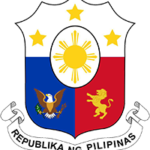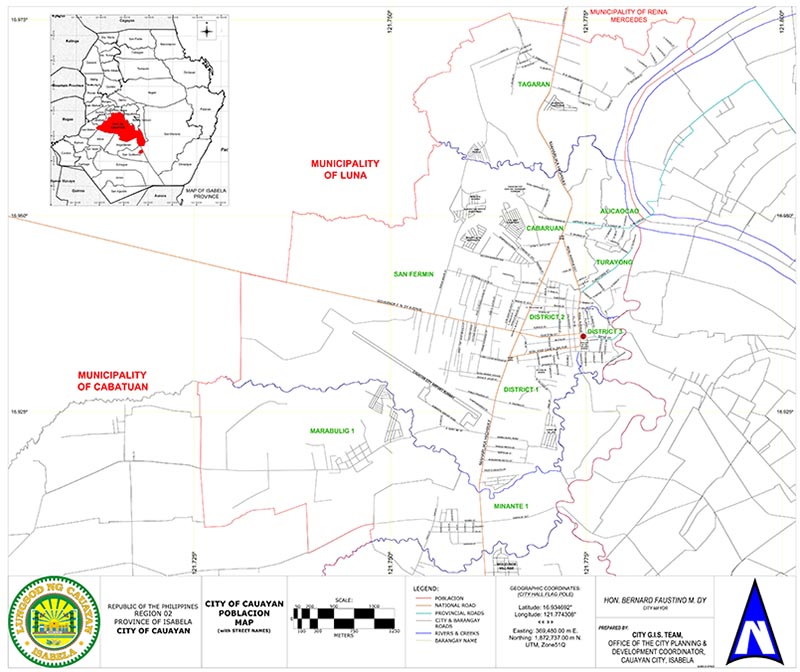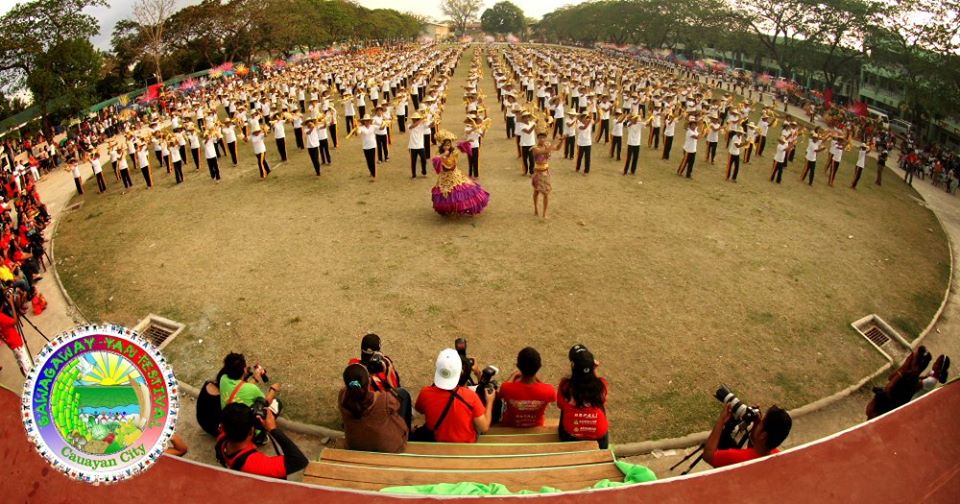| Income | 3rd Class Component City |
| Dialects | Ilocano, Tagalog, Gaddang |
| Total Population | 140,218 (2016) |
| No. of Households | 30,556 (2016) |
| Growth rate | 1.45% |
| Climate | Relatively wet from May to November, dry for the rest of the year |
| Products | Palay, Corn (yellow and white), Roots and Tubers (cassava, camote),Vegetables and fruits |
| Means of Livelihood | AgricultureTrade and CommerceServices |
| IRA Share (2016) | PhP 542,027,140.00 |
| Locally Source Revenue | PhP 157,463,060.00 |
| Total LGU Income (2016) | PhP 699,490,200.00 |
| Historical Site | Historical structures still visible to this day are the big adobe stone church located at the Poblacion and the Tabacalera warehouse and La Insular bodegas found at barangay Turayong that date their construction during the Spanish rule. |
| Agricultural Lands | 59.33% or 19,959,7065 hectares |
| Built-up areas | 4,013.2820 hectares |
| Population Density | 390 person per sq. km. |
| Literacy Rate | 98.74 |
| Police Force | 75 |
| Fire Protection Force Size | 13 |
| Number of crimes per 1000 population | 0.6 |
| Number of NGOs | 30 |
| Number of power connection | 33,225 |
| Number of potable water connections | 9,844 |
| Number of Internet Service Providers | 3 |
| Registered Business Establishments | 3,418 |
| Number of Banks | 34 |
| Number of hospitals | 8 |
| Number of Medical Clinics | 37 |
| Number of Dental Clinics | 15 |
| Number of Dermatology Clinics | 4 |
| Number of EENT Clinics | 4 |
| Number of Orthopaedic Clinics | 2 |
| Number of Optical Clinics | 8 |
| Number of Tertiary Schools | 6 |
| Number of Secondary Schools | 20 |
| Number of Elementary Schools | 12 private and 64 public |
| Number of Preparatory Schools | 12 |
| Number of Special Schools | 2 |
| Number of Recreational Park/s | 1 |
| Number of Recreational/Amusement Centers | 3 |
| Number of Cell sites | 20 |
| Number of Hotels | 25 |
| Number of Resorts | 10 |
| -> 4th largest in population size among the municipalities of Region 2. | |
| -> From its humble beginnings as a small town, it was converted into a component city by virtue of RA 9017, ratified by a majority vote on March 30, 2001. | |
| -> Identified under the RPFP 2001-2030 as one of the region’s key urban centers, providing a diverse range of facilities to cater to the administrative, social, commercial and institutional requirements of the region’s population. |
Historical Development of the
CITY of CAUAYAN
Province of Isabela
Researched by:
Troy Alexander Gozum Miano, DPA
Commissioned by:
Hon. Mayor Bernard Faustino La Madrid Dy
Philippine Copyright 2014 September 8

PRE-SPANISH SETTLERS
In the beginning, the land now known as Cauayan City in the mid-southern part of the Province of Isabela in Cagayan Valley Region in Northern Philippines, was first roamed and settled by dark skinned and kinky haired pygmies who arrived in the island of Luzon during the Stone Age about 25,999 years ago. The Negrito Atta (Aeta) peoples of modern times were relatives of the first settlers of northeast Luzon.
Between 200 B.C. and 300 A.D., colonizing expeditions of Indo-Malay peoples, the forefathers of the founders of Cauayan, arrived along the northern coast of Luzon. The Gaddang people were one of the many Indo-Malay tribes. They found the Cagayan River watershed sparsely occupied by long-established Aeta, while the hills were already populated by the more-recently arrived Igorot (thought to originate from Taiwan as late as 500 B.C.). The Indo-Malay colonists practiced swidden (slash-and-burn based shifting cultivation) farming, and developed successful littoral and riparian societies as well; all economies which demand low population density. Whenever there were population increases following economic success or continued in-migration, the Indo-Malays were forced to move. Over many generations they spread inland along the Cagayan River and its tributaries. As Gaddangs occupy lands further away from the mouth of the river than most Indo-Malay groups, they may be considered likely to have been among the earliest to arrive.
The Gaddangs were the founding citizens in the City of Cauayan including the towns of Angadanan, Luna, Alicia, Santiago and parts of Aurora, Gamu (Dalig), Reina Mercedes, Naguilian, and Tumauini. The name derives from a combination of the words ga which means “heat” and dang which means “burned” referring to their much darker complexion compared to other peoples of the Cordilleras and Cagayan valley.
SPANISH COLONIZATION
On February 13, 1565, the fifth Spanish expedition led by Miguel…
Vision
The City of Cauayan is the Innovative City of the Nation (ICON).
Home to capable, proactive, diverse, and resilient people; supporting a green, inclusive, and globally-competitive economy; enabled by smart infrastructure in an ecologically-balanced environment; and served with foresight by firm leadership and a collaborative bureaucracy.
Mission
To enable the sustainable development of our communities through dynamic leadership and exemplary local governance, with the ultimate aim of uplifting the quality of life of every Cauayeño and serving as model for the creation of innovative cities across the nation.
Core Values
Accountability
Excellence
Transparency
Inclusive
Integrity
God-loving
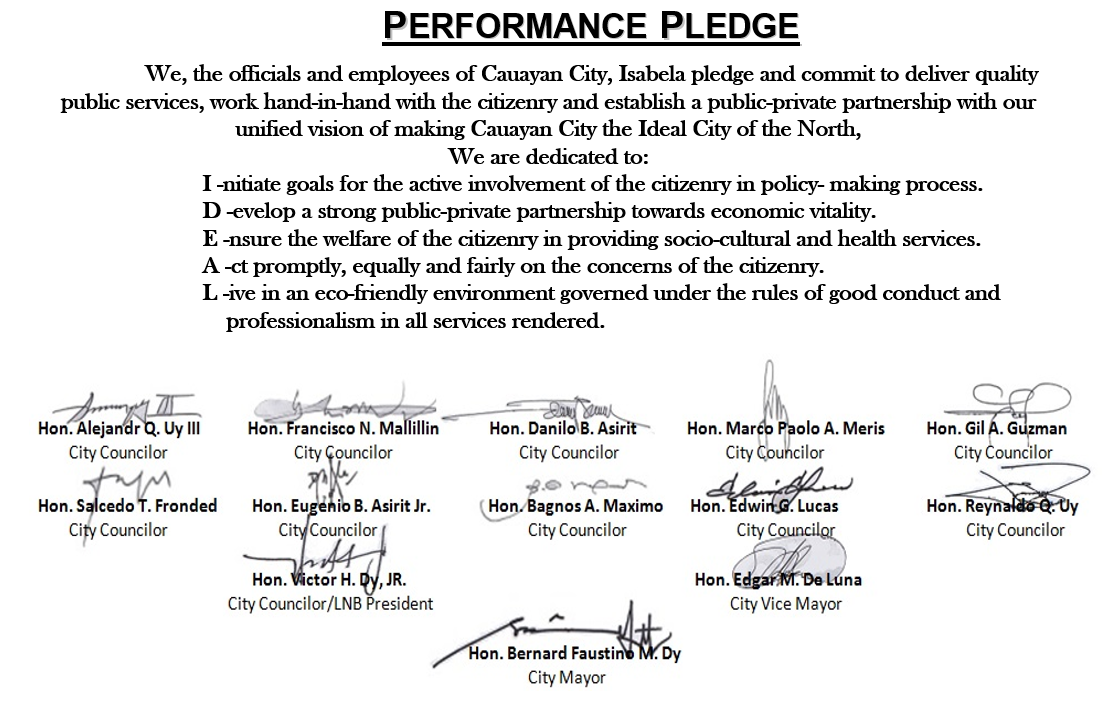
FEEDBACK MECHANISM
Your comments, suggestions, recommendations, complains or feedback on your services are highly appreciated. Please feel free to accomplish the forms available at the Public Assistance and Complaints Desk (PACD) and drop the accomplish forms in the suggestion box located at the PACD. You may also contact us through the following numbers:
Office of the City Mayor -(078) 652-2017
Office of the City Administrator -(078) 652-4069
PACD -(078) 652-2205
WHO MAY AVAIL OF THE SERVICES?
All residents and requisitioners from neighboring towns and provinces.
SCHEDULE OF AVAILABILITY OF SERVICES
Monday to Friday
8:00 AM to 5:00 PM
NO NOON BREAK
OFFICE ADDRESS
#107 Rizal Ave, Distric III
Cauayan City, Isabela
Philippines 3305
OH, CAUAYAN
Oh, Cauayan sweet home in thee I live
I dedicate to thee my heart where’r I roam
With mind and soul to serve thee and my God
I shall render my best at work however hard
When’er thy call resound be it night of day
What’er the weather be I must obey
Yes, Cauayan I vow to serve thee well
Thy sons and daughters all
The stars with me foretell
Shall march onward to the goals set for thee
I shall never falter to thy call to duty
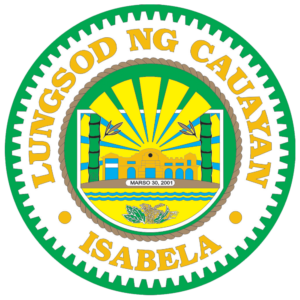 | |
| CITY OF CAUAYAN, PROVINCE OF ISABELA, OFFICIAL SEAL | |
| SEAL SYMBOLISM | |
| 65 Gear Teeth | Symbolizes the sixty five (65) component barangay of the city. |
| ROPE | Symbolizes the unity among officials and city residents that gives strength to the city. |
| SUN | Represents the bright future of the new city. |
| BLUE SKY | Symbolizes the hope and existence of peace within the city. |
| PALAY, CORN, TABACCO | Represents the major crops and the major sources of income of the Cauayeños. |
| BAMBOO POLES | Represent the humble and resilient Cauayeños. |
| BLUE WAVES | Represent the Cagayan River and all bodies of water which serve as the fishing ground and sources of marine life and irrigation for the city's fertile fields. |
| BUILDING | Depicts the City Hall which represents the new face of Cauayan as a City. |
FESTIVALS
The City Fiesta and the Feast of Our lady of the Pillar are celebrated annually on April 10-13 and October 10-12 respectively. Since its conversion into a component city on March 30, 2001, the City Government started to celebrate its founding anniversary with the conduct of “Gawagaway-yan Festival aimed to preserve the rich cultural heritage of the city. It is highlighted by street dancing, beauty contest, trade fair, cultural parade, parlor games, free concert, band exhibition and other variety shows performed by local and Manila-based talents as well.
Transport facilities include a total aggregate length of 512.27 kms. of concrete and gravel roads accessible to all types of vehicles; The Cauayan Domestic Airport just recently undergone upgrading as it is envisioned to become an InternationalCargoPort by the RDC and BOT. A 50M-Central Transport Terminal likewise has just started operation and is easing traffic in the poblacion area.
The Cauayan City has three airline named Cebu Pacific, Philippine Airlines and WCC Sky Pasada Costal Town and Baguio.
TRACES OF THE GADDANGS
Ethnologists classify the Ibanags, Yogads, Itawis and Gaddangs as the “naturales” of Cauayan. In the same manner, the Ilocanos are the naturals of Ilocos Norte, Ilocos Sur, La Union and Abra.
The Ibanags are found all over Isabela but they are mostly found in the northern half of the province more particularly in the municipalities of San Pablo, Sta. Maria, Cabagan, Tumauini,Ilagan and Magsaysay. Most of the Yogads are found in the town of Echague. The Gaddangshowever are found in the municipalities of Angadanan, aurora, Gamu, Reina Mercedes, Santiago,Tumauini and Cauayan.
The GADDANGS are divided into two types, the Pagans and the Christian Gaddangs. The life of the Gaddangs from birth to death is a series of rituals and offering of sacrifices to their Gods and Goddesses.
The Pagan Gaddangs believe in the existence of supernatural being’s power. They believe that they are surrounded by these beings like the “CARAGAT”, the “MAINGALS” (ghost deities) and the “CARALUA NA PINATAY” (ghost). Fear of these Gods affects their every behavior, guides their way and every action and governs their every existence.
Although majority of the Gaddang and other naturals are now Christianized, there still exist the ancient custom of the Gaddang called “GAGANGAY NA MANANANACAMIRA”. To the Gaddangs, supernatural beings are like human beings. They have their own families, they need food, clothing, drinks and the like. Theirs is a kind of body which is invisible and impaliable or spiritual. They marry but in a spiritual manner. Their offerings inherit their spiritual qualities. They dwell in a fixed adobe, they cannot be seen but they can sometimes be heard. They can be touch by men but they cannot be felt. Then they eat, drink chew or smoke, they eat the “soul” of the pig or chicken and drink the “soul” of the liquor, chew the “soul” of the betel nut and smoke the “soul” of the tobacco and dress themselves with the “soul” of the cloth to cover their spiritual body. They are not only humanlike but they are also Gaddang like, since they are represented as having the same desire and taste, joys and sorrows as the Gaddangs. (Reprinted from Cagayan Valley Today, February 1977 issue)
There are various conflicting versions of the ethological curiosity, the pockets of Gaddangs inCauayan who developed their dialects, customs and tribal clannishness to the exclusion of neighboring towns such as the Ibanags of Gamu and Ilagan and the Yogads of Echague and theItawis in some section of Isabela. Gaddangs are ethologically associated with those of NuevaVizcaya while the Itawis are of Western Cagayan and Isabela and lastly, the Ibanags are of Cagayan origin.
Based on Church records, sometimes in 1622 a missionary priest Father Pedro de Sto. Tomas assigned to Calanusian in his eagerness to enlarge his flocks sailed up the Magat River until he reached that narrow valley now occupied by Solano and Bayombong people by the originalGaddangs. This tribe was distinctly differ from the native Kalingas and Igorots who inhabited the surrounding mountains who were worrying against the low-landers as early as that time.
Offering wider lands, richer forest and comparative place, the missionary friar convinced 300 families of Gaddangs of Nueva Vizcaya to return with him to Calanusian to settle in the lush valley of the Cagayan River and this the original Gaddangs of Cauayan are established here about, developing their own peculiar dialects, retaining their distinct customs and ways of life to the exclusion of their neighbors ways. Similarly, other priest and Siffu River and brought down Itawissettlers down, stream established pocket of settlement along the Cagayan River. Of course, theIbanags from downstream lured by the province better life upstream sailed up too, and secure themselves or intermingle with the inhabitants along the river deltas and remain to develop their ethnic peculiarities even up to the recent times.
The town was originally inhabited by a handful of Gaddang, Itawis and Ibanags but with the passing of the years in many settlers of different ethnic groupings migrated to the place. Today, the town can be truly said as a melting pot. (Reprinted from the “Town Fiesta Souvenir Program of Cauayan, 1985).
